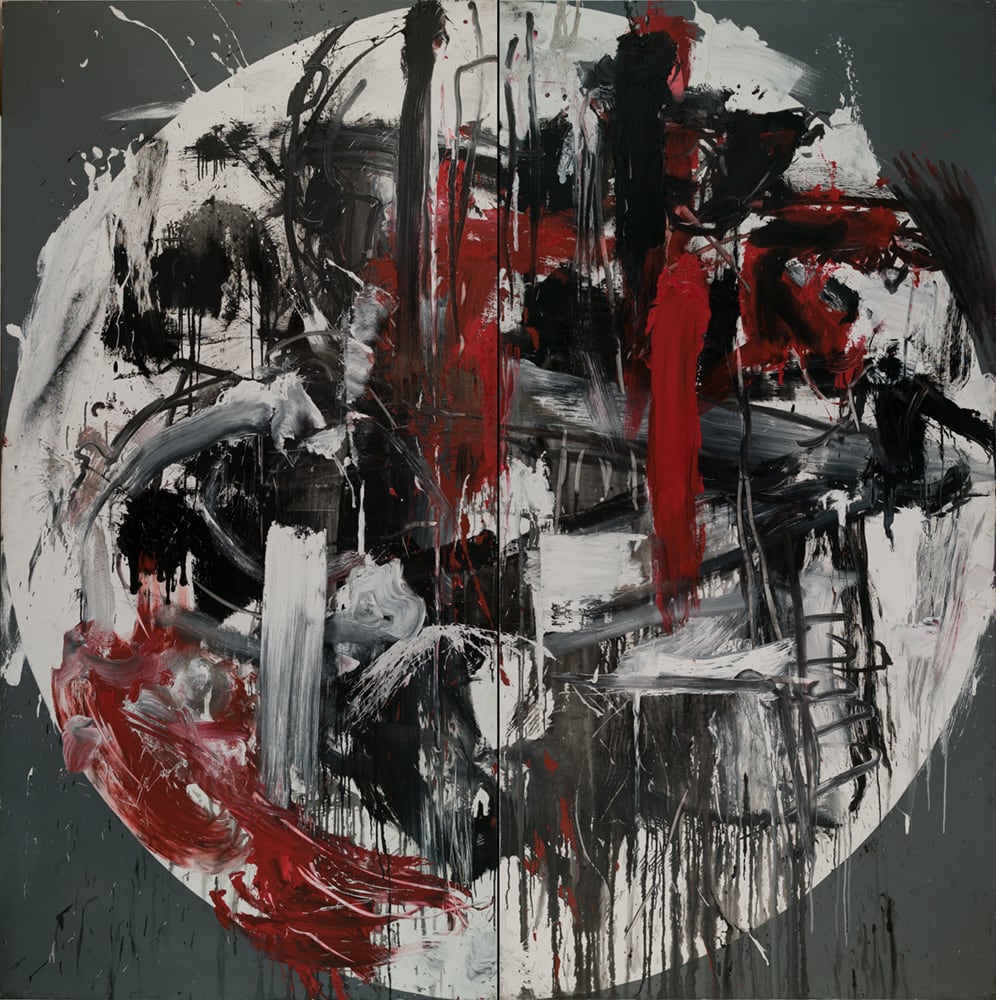
Oltre (Ciclo II-3 Rosso ‘85), 1985
Emilio Vedova (1919–2006, ITA)
| Medium: | Oil on canvas |
| Dimensions: | 280.5 x 279.5 cm |
about the work
The gestural painting of the self-taught Emilio Vedova was soon attributed by art critics to the Informel movement during his lifetime. The artist himself, however, believed this attribution was superficial, since contrary to its informal automatism, his paintings were said to be constructed. Their inherent structure reflects a structure of consciousness, which is based not only on his own personality but depicts a general area of experience. Vedova was a committed antifascist and was active in the northern Italian partisan movement and others from 1944. As a co-founder of various Italian artist movements – such as Corrente, Nuova Secessione Italiana, Fronte Nuovo delle Arti, Gruppo degli Otto – the art scene after 1945 would have been inconceivable without Vedova. In addition to numerous exhibitions in Europe, his first exhibition in New York was held in 1951. Vedova took part in the Venice Biennale 13 times and won the Golden Lion for his life’s work in 1997. Further multiple appearances at the Biennale of São Paulo and the documenta in Kassel underline the importance of Vedova’s work in the context of the international art scene after 1945.
The two-part painting Oltre (Ciclo II-3 Rosso ’85) from the Reinhard Ernst Collection represents a well-advanced phase in the artist’s work. After developing a visual language by the 1960s, which may have been based ostensibly on gestural brushwork and psychic automatism but made use of a structure of symbols, Vedova wandered off in his uncertainty about current developments in the visual arts: pop art, minimal art and conceptual art were increasingly displacing expressive painting. Only in the mid-1980s did the artist rediscover his visual language. During this period, he created the three great series of works Dischi, Tondi and Oltre – the latter provides the work included in the Reinhard Ernst Collection. In Oltre space and material are emphasised: the contrast between geometric shapes, the rectangular painting surface and the white circle, and the unpredictable, expressive brushstrokes, from which the paint trickles across the canvas, underlines this emphatically.